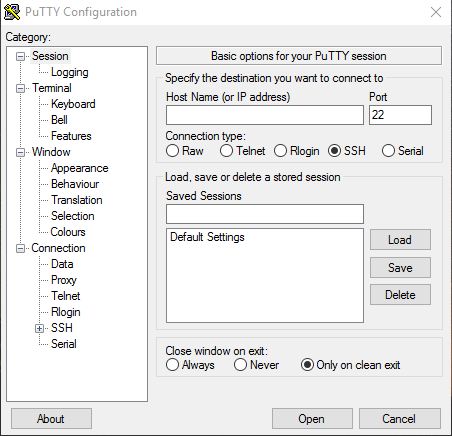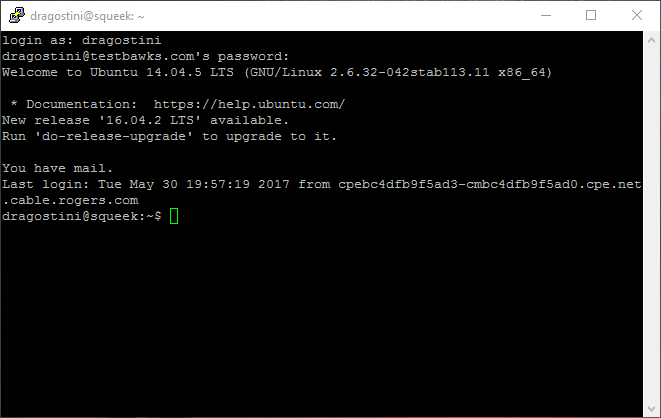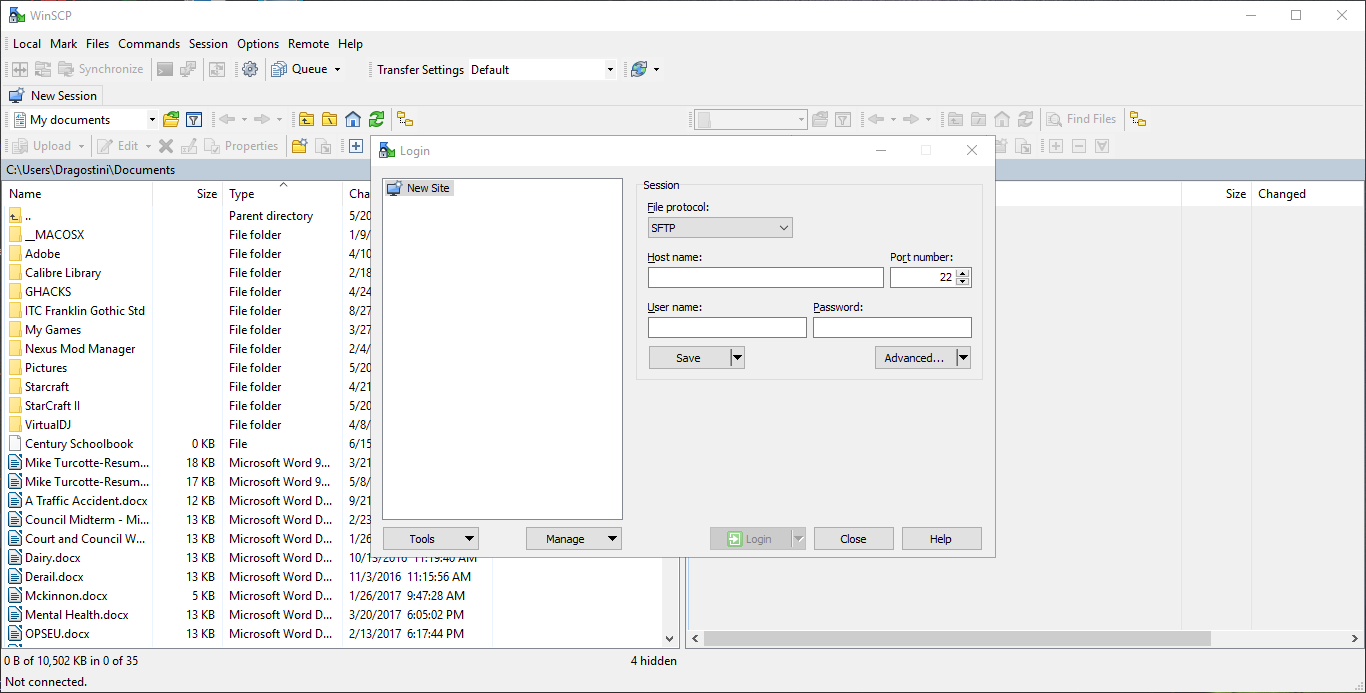Accessing your Linux server from within Microsoft Windows
In a previous article we discussed how to start up a basic web server with nginx and get a primitive webpage online, however, what if we are hosting our website on a VPS server not located locally, and we are wanting to access the server from within Microsoft Windows?
There are two solutions that I would jump to right away: Putty and WinSCP.
Putty is an application that allows us to make an SSH connection to a remote server (Putty also can use things like Telnet, but we won't be getting into that today,) in order to access it via commandline. WinSCP will allow us to connect via SSH and transfer files/folders back and forth between our machine and the server; in a graphical fashion.
Accessing Linux servers from Windows
The first thing you'll want to do is download the above mentioned software, from the following links:
Once you have these and have installed them accordingly, let's just jump right in and start up putty.

Connecting with Putty to your server is fairly straightforward, assuming that you haven't changed the port number or anything, simply enter the IP address or the Domain Name of the server, and connect. You will then be prompted for a username and password. Enter these as appropriate, and you will be connected to your server.
From here, you have total commandline access, and are free to do as you wish within the power you have! At this point, assuming you didn't sign in as root, you can navigate your current user account, use sudo / su, make files, edit files, configure files, and essentially do everything you need to do...

WinSCP
But, let's say we want to transfer over some files from our local machine to our server? Well, we COULD do that via commandline, but for basic users just starting out, it would be much easier to use WinSCP to do this...So, let's start up WinSCP.

Once you start WinSCP you are greeted with a similar screen to that of Putty. Again, enter your appropriate credentials, and sign in. Once in, you'll be shown a screen with two areas, the left being your local machine, the right being your remote server. Now you can access files in a graphical environment, and can easily drag and drop transfer files back and forth between machines without fussing about with the commandline. I personally still find it easier to do editing of configuration files through Putty using a text editor for the commandline like Nano, but you DO have the option of working solely through WinSCP to edit text files and such if you choose do to so.
Final words
Hopefully this helps some of you who may not have been aware on a way to connect to your remote servers via Windows. There are other options out there, but these are the tried and true methods I have used for years, and that I personally recommend for new users. My biggest advice to you is that while you have the option of working strictly within WinSCP, don't; get comfortable using Putty, using the commandline, and working in a non graphical environment. You'll thank yourself later, use WinSCP for transferring files over from local to remote, but otherwise, stick to Putty!
How about you? Any other methods you prefer?
This article was first seen on ComTek's "TekBits" Technology News

- Log in to post comments